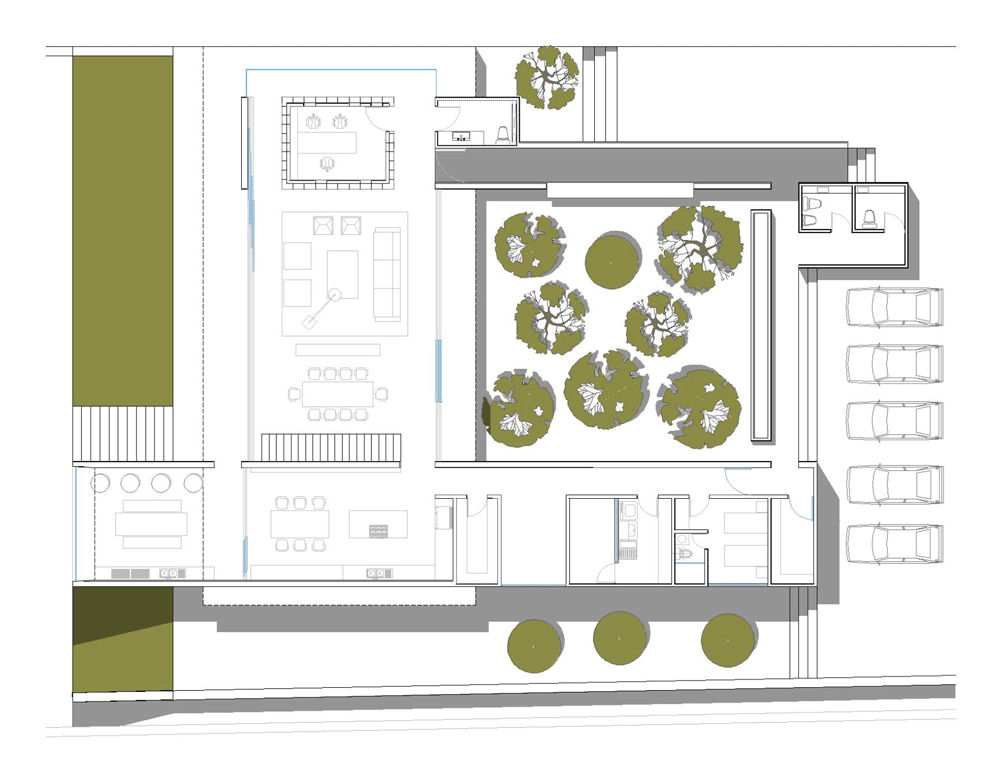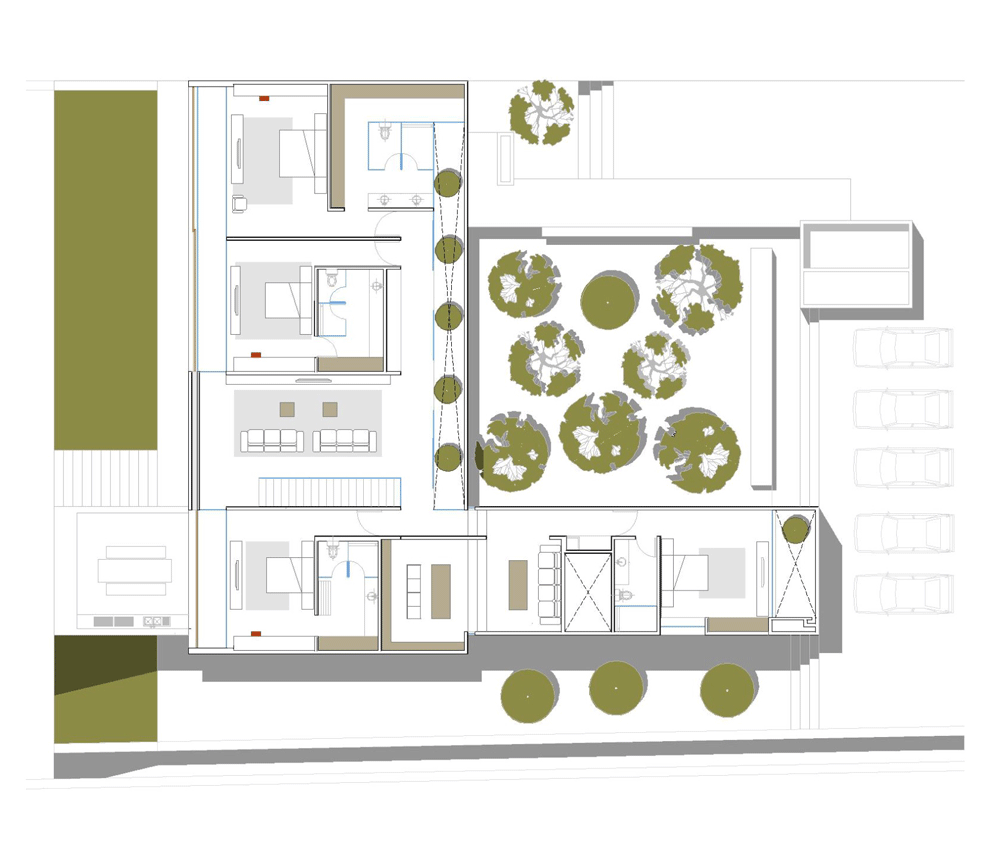Roof Arquitectos arranges Mexican residence around a "forest" of red oak trees
Thirteen oak trees are planted in a courtyard at the centre of this residence by Roof Arquitectos, which sits in the hilly landscape outside the Mexican city of Morelia (+ movie).
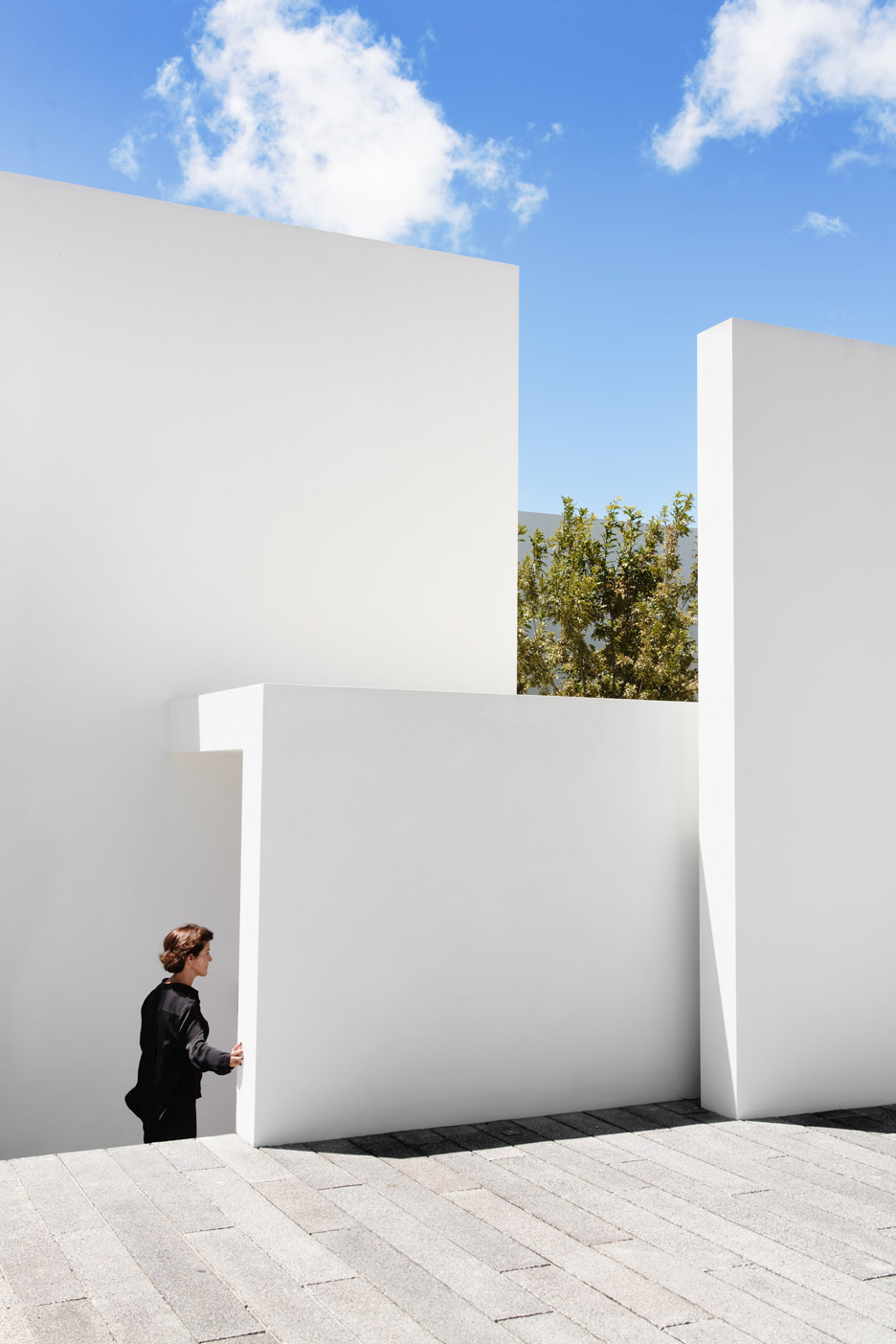
Roof founders Rogelio Vallejo and Francisco Noriega took the unusual starting point of landscaping first and building later.
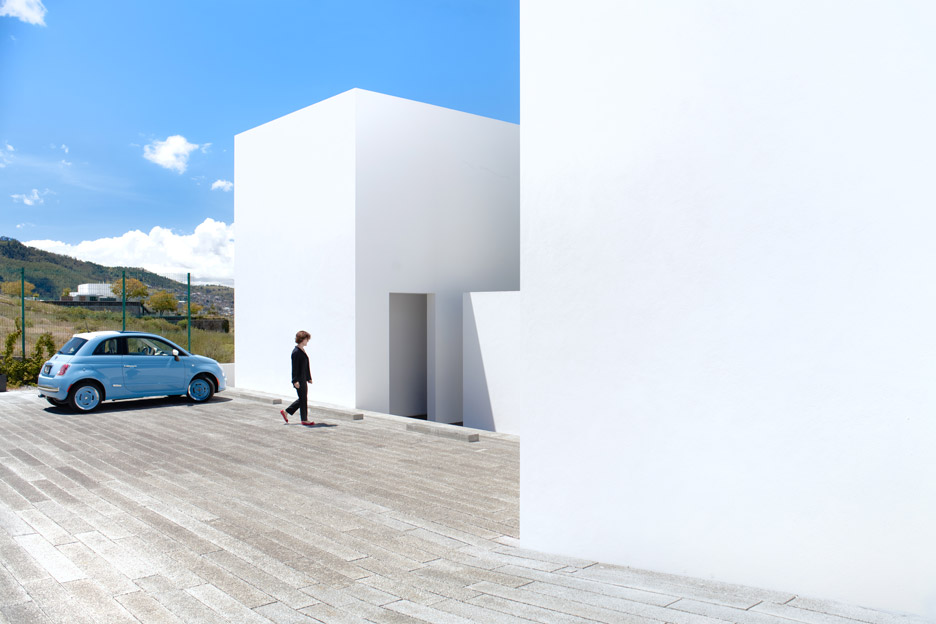
After planting the trees, which they describe as a "central forest", they arranged the residence around them in four blocks, creating a patio that is intended to be evocative of the city's old courtyard houses.
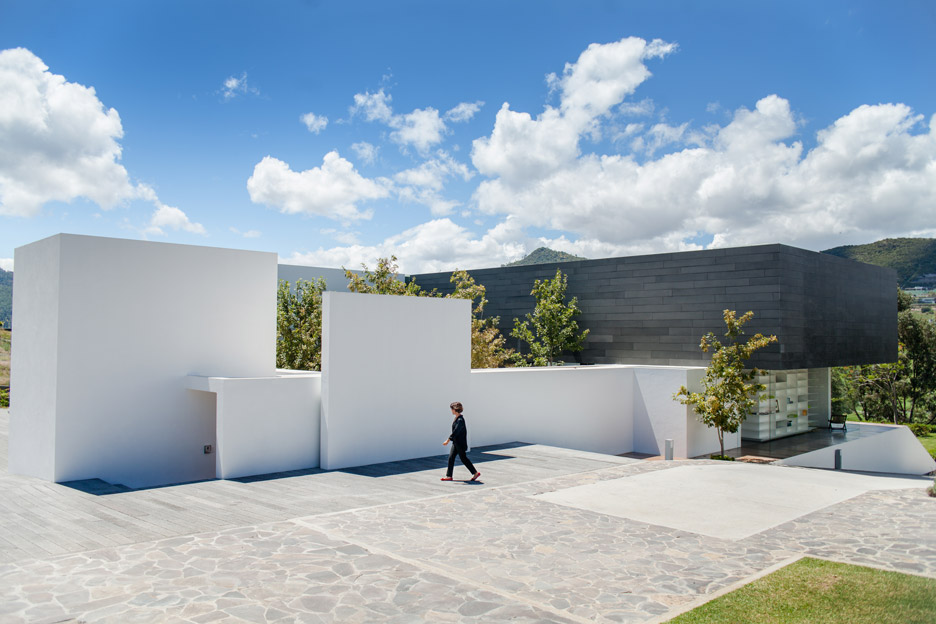
"When we first envisioned this house, we imagined a small, silent forest of red oaks, and how that silence would be broken by the wind rustling the foliage on trees and the sound of footsteps on wood," said Vallejo and Noriega.
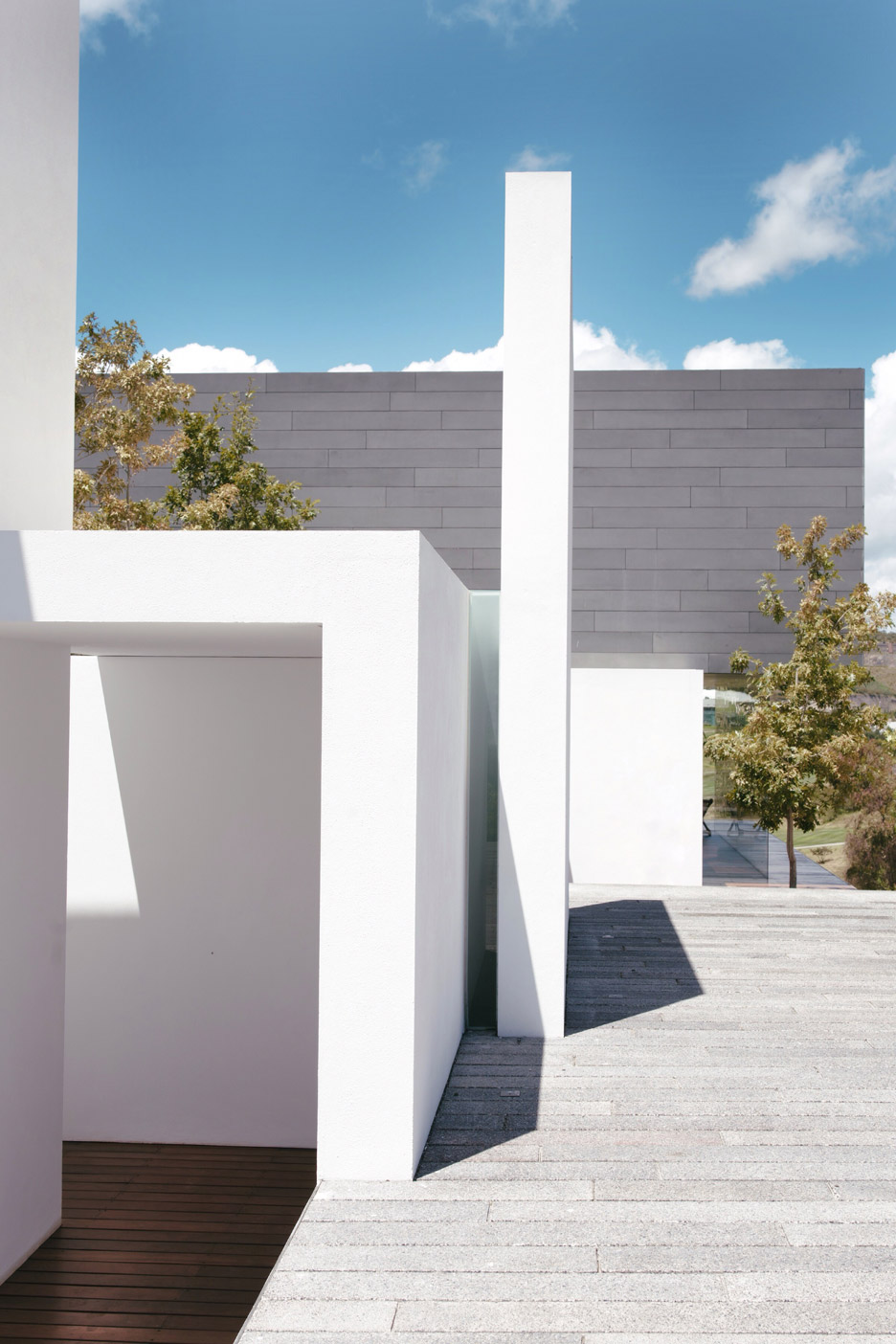
"The first move we made, when we started to build this house was to plant 13 red oaks," they added. "These 13 trees are the heart of the house, around them the space is emphasised, and the house is organised."
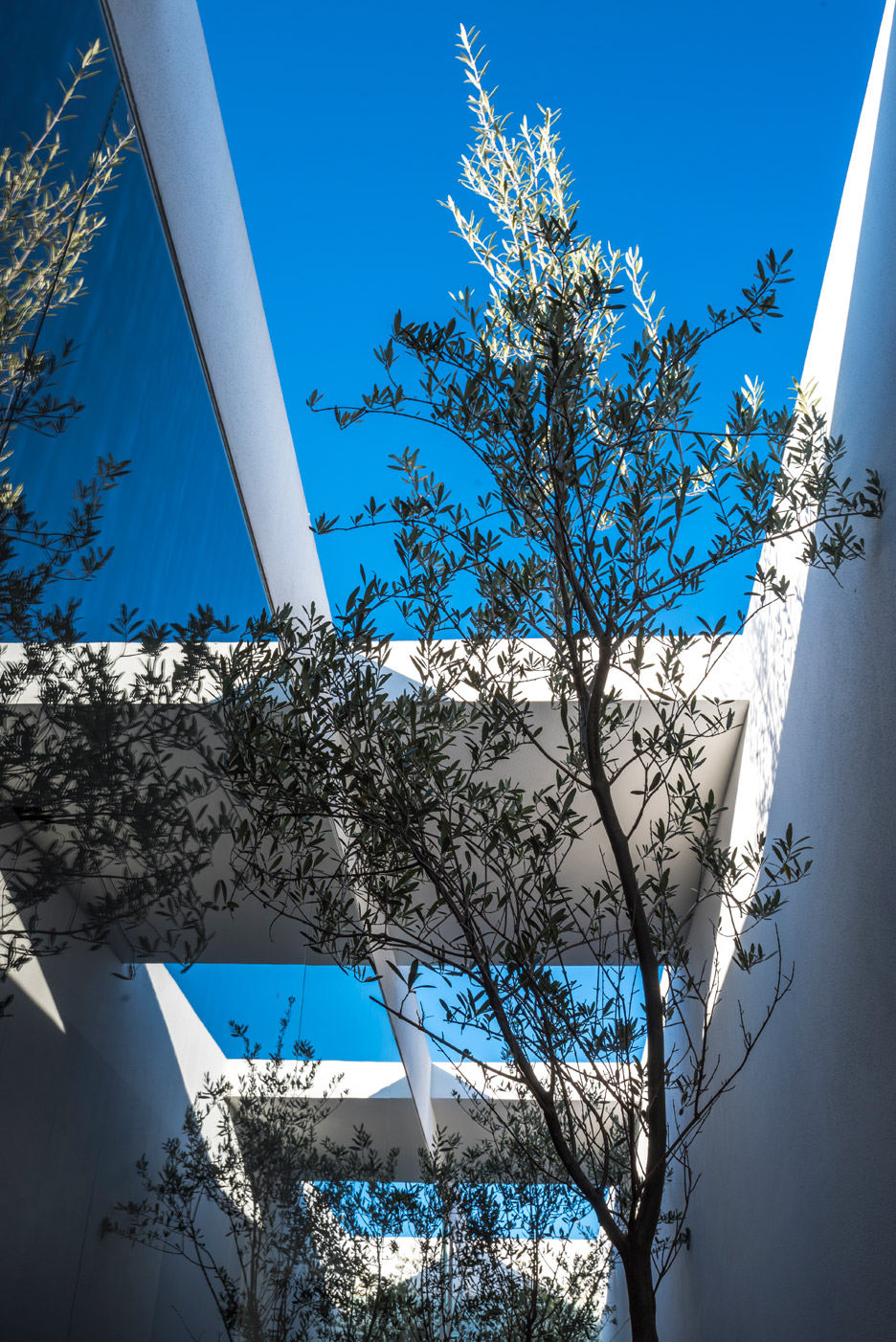
Casa MK is inhabited by a couple and their two children, who all share a keen interest in art, photography, writing and architecture.
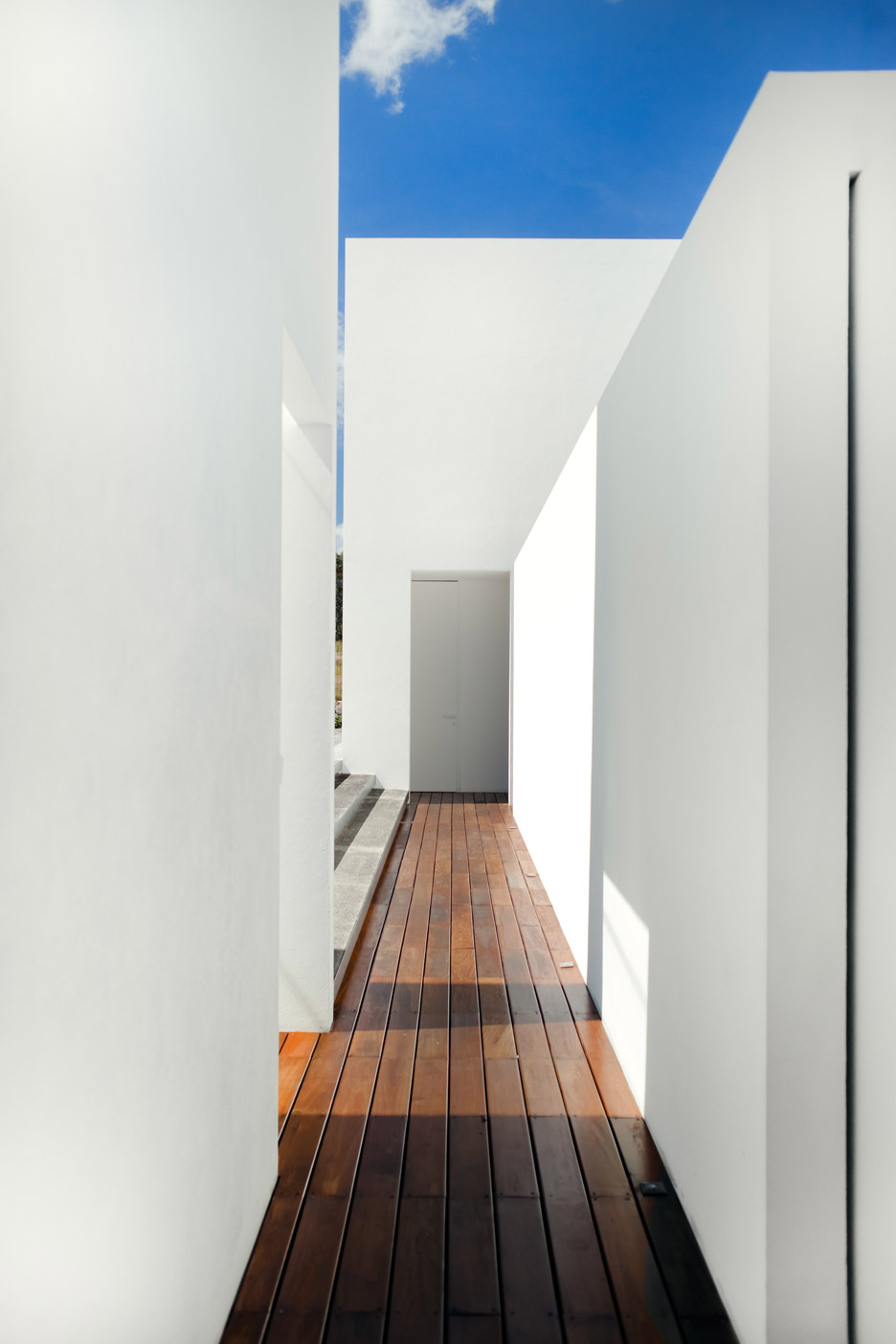
"When they asked us to design this house, they told us that it was very important for them that we knew every member of the family in a very deep way, only after we met them we could start the design process of the house, and that's what we did," the architects told Dezeen.
"When we finally felt that we knew each other, they gave us total creative freedom."
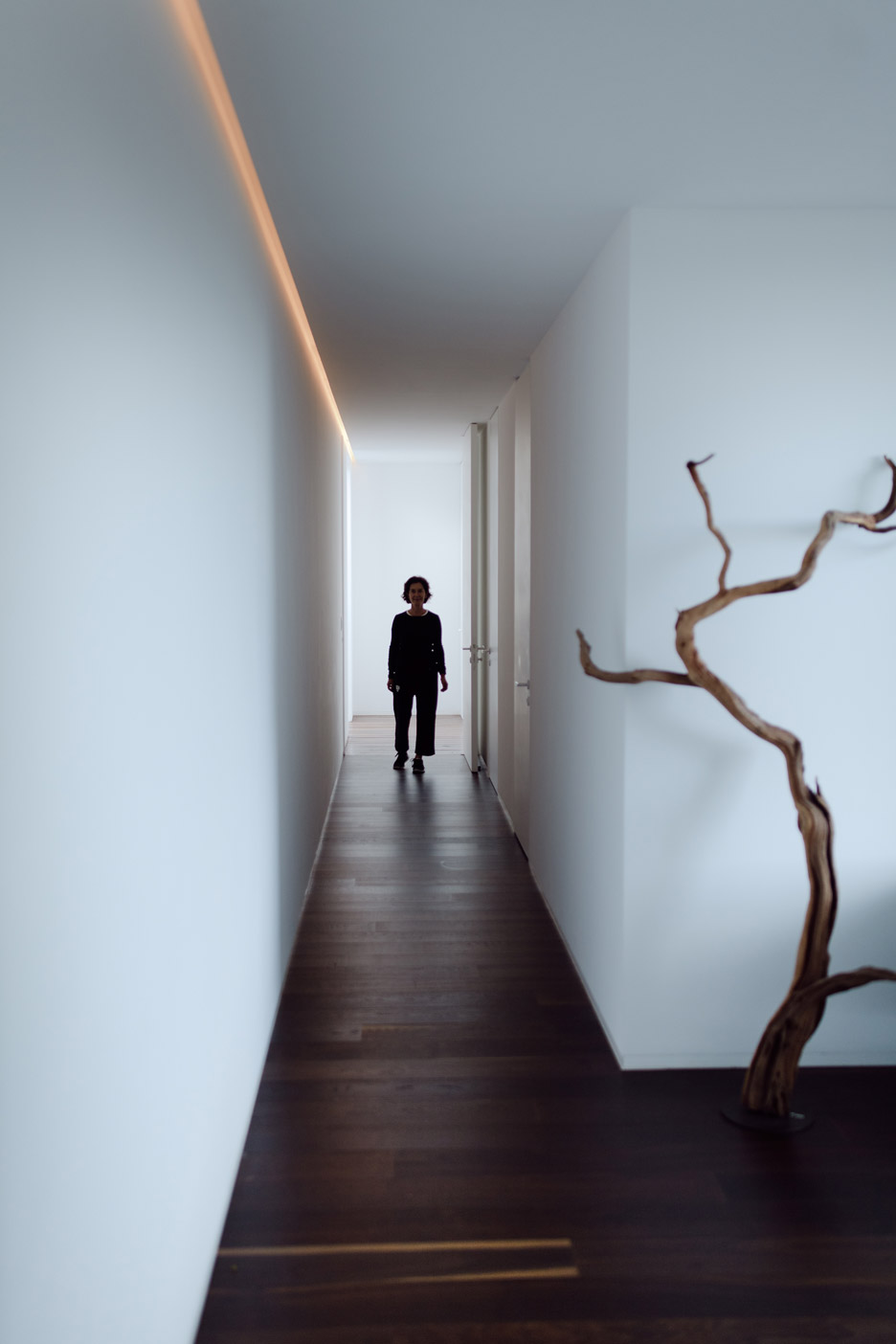
"This house is a building that is difficult to understand from a distance; it requires a user that will inhabit it and roam through it in order to perceive the fascination that we feel for its space, geometry, nature and lighting allure," they continued.
White walls screen the entrance to the residence and the courtyard. But inside, glazed walls and panoramic openings frame views of the oak trees as well as the the hilly landscape.
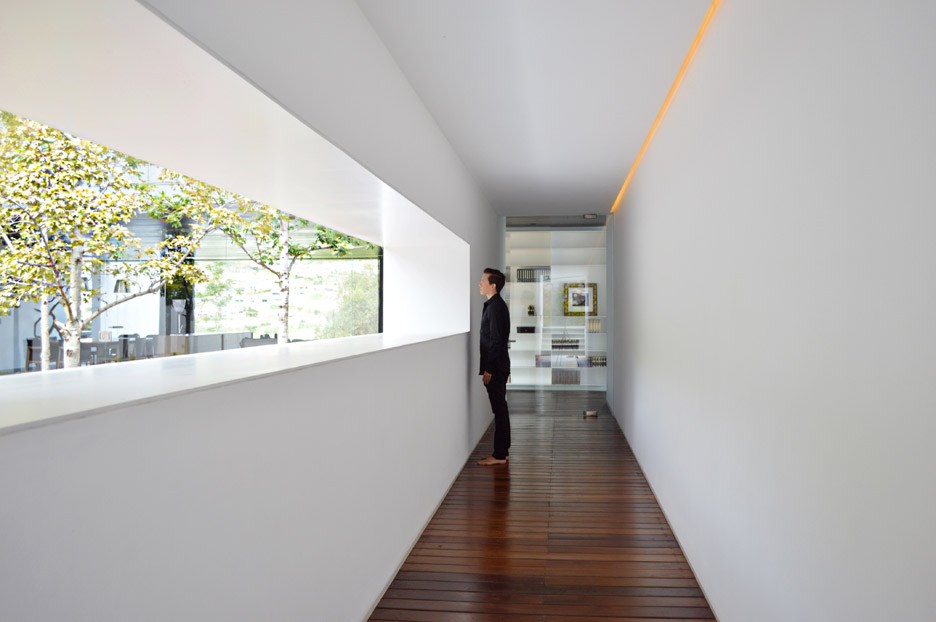
The first and largest of the four volumes contains a kitchen, pantry, staff quarters and a terrace at ground level, and a guest room and study on a smaller upper floor.
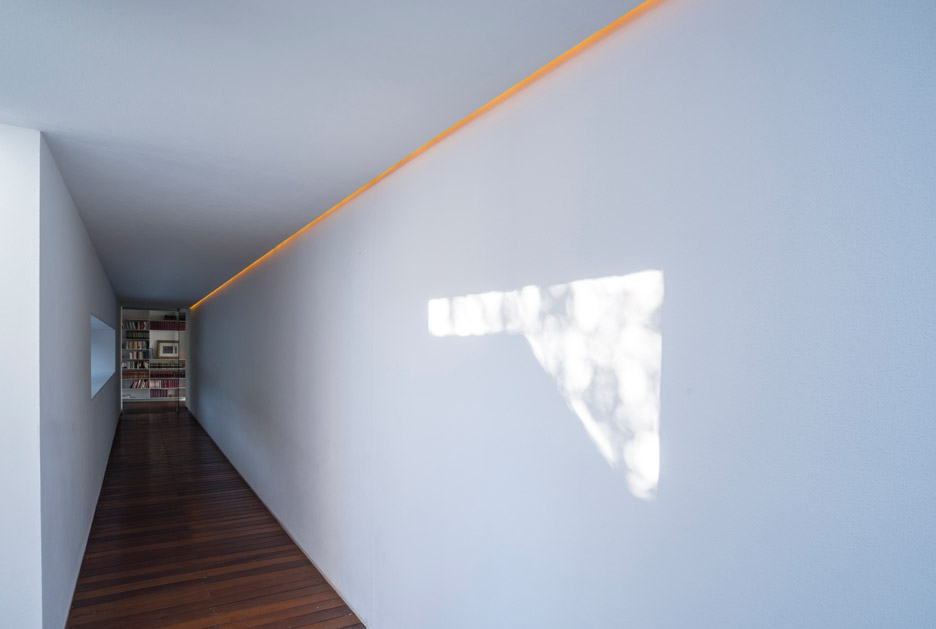
The second block is clad in pieces of black granite and slots on top of the main living room volume. It hosts three bedrooms and a TV room on the first floor.
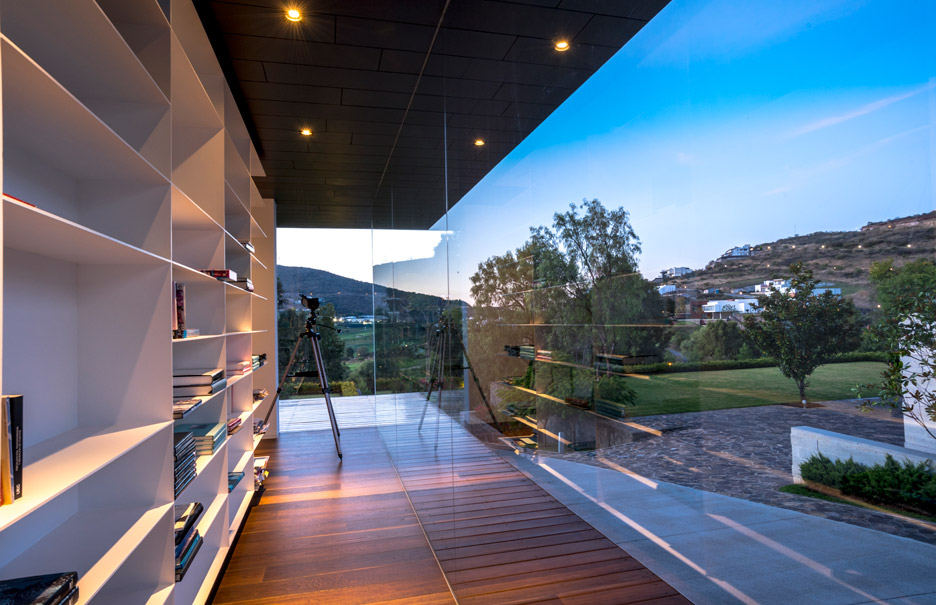
A pair of floor-to-ceiling windows with wooden shutters face away from the courtyard and towards a hillside to give the bedrooms a degree of privacy, while a lounge, dining room and office in the glazed lower volume are oriented towards the oak trees.
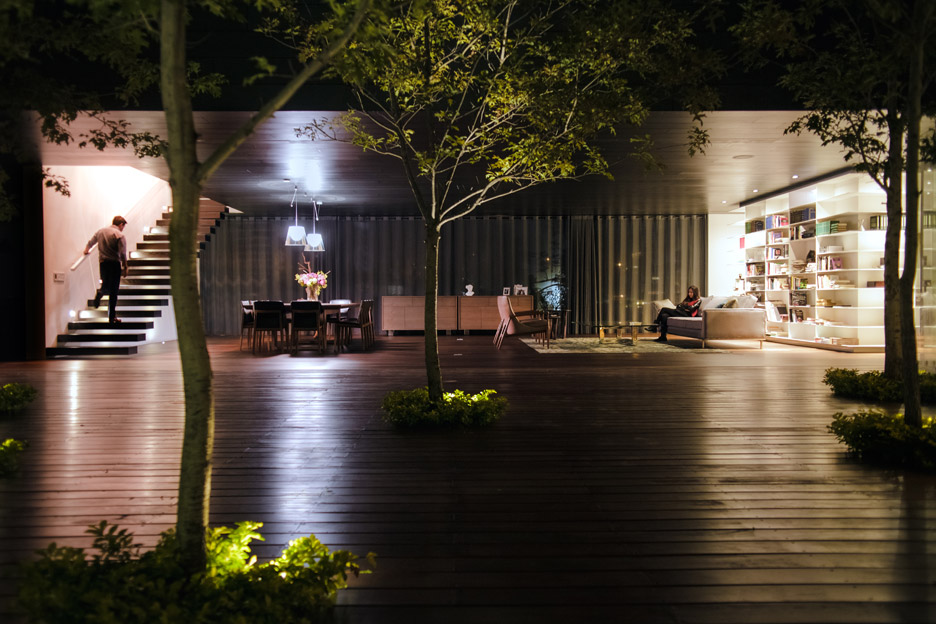
The third volume is a long hallway with an elongated window, and the fourth and smallest volume contains toilets that can be easily accessed from the patio.
The interior floors are covered in the same dark hardwood boards as the patio, contrasting the white walls and creating a continuity between indoor and outdoor spaces.
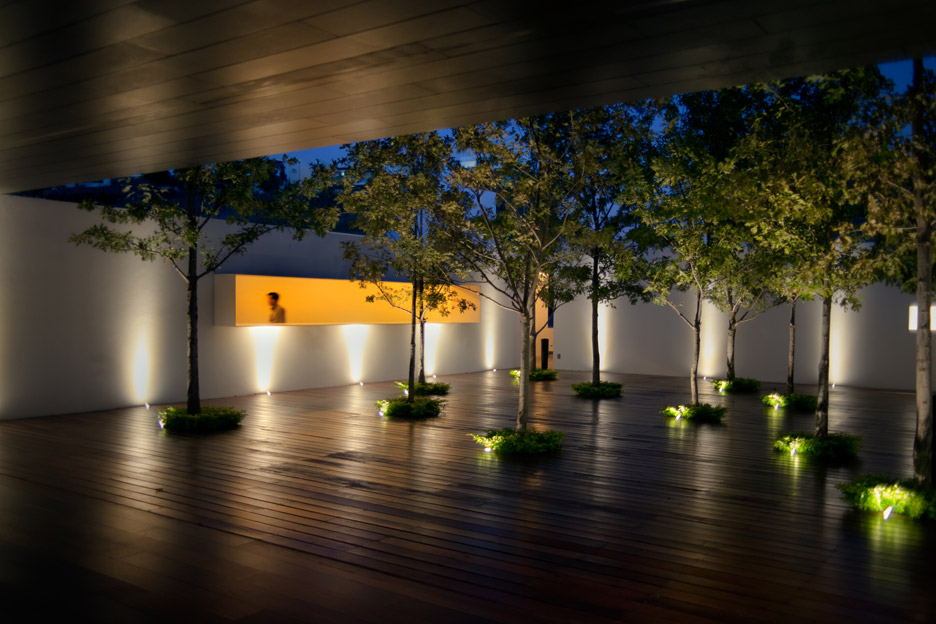
"We chose hardwood floors because of the smell, the sounds they make when you step on them, and the feeling when you walk barefoot," explained the architects.
"Hardwood floors also allowed us to have the same material in the living room, dining room and the patio, blurring the boundaries between the interior and exterior space."
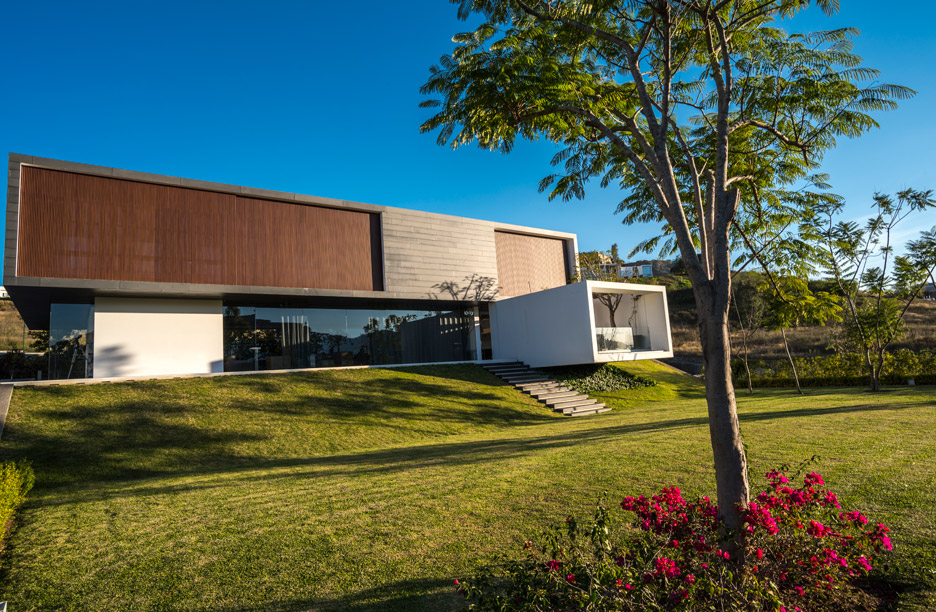
Other homes featuring planted courtyards include a stilted house in Santiago that is elevated around a beech tree and an epilepsy care centre with stippled concrete walls that enclose gardens.
Photography is by Vinicio Herrera and Mariano Rentería. Video is by NOME filmes.
